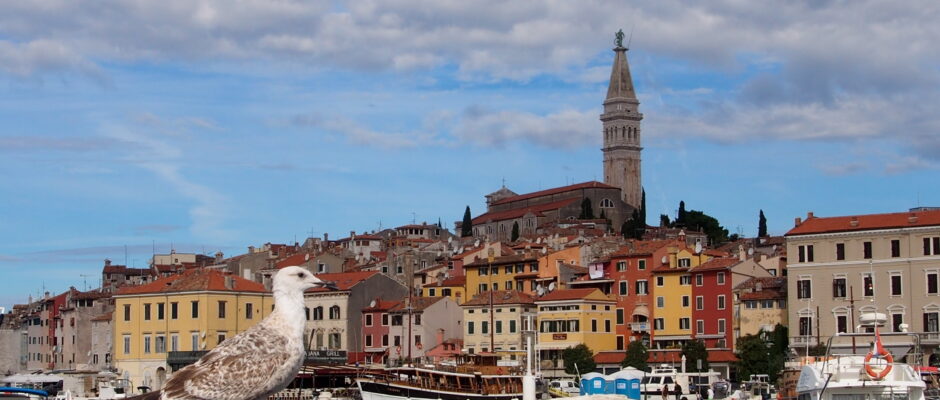Adriatic sea, separating two European peninsulas: Italian and Balkan is a home to over 1300 islands that are mainly stretching along the Croatian coast. Besides Italy and Croatia, Slovenia, Bosnia and Herzegovina, Albania Slovenia are the countries blessed with the piece of this beautiful blue sea surrounded by rocky shores, lemon, orange and pine trees and fields of lavender. Locals have been living off the fruits of the sea and forests for centuries. They harvest and enjoy wild fruit, home grown vegetables and herbs including oregano and sage. Earth brings them asparagus, capers, mushrooms, olives, figs, pomegranates and blackberries which flourish freely here. And the sea offers anchovies, squid, octopus, mackerel and eel. Here, we will cook together the dishes of the Balkan side of Adriatic.
There are three regions particularly interesting on that side: First, there is far northern Istrian peninsula with its truffle forests, karst prosciutto coming from the Karst region, white Malvasia wine, sheep cheese and supreme quality olives and virgin olive oil. Then, there is Dalmatian coast, further South, with the “pearl of Adriatic” as George Gordon Byron called Dubrovnik as its landmark is another gastronomic center- there one can enjoy specialties such as black risotto, Dalmatian prosciutto, baked octopus in “peka” (earthenware dish) or “pashtitsada”, a marinated battered beef steak served with gnocchi. Dalmacia is especially rich in wines, with “Plavats mali”, a primary red wine of Croatia. And of course Montenegrin coast, with its legendary Njegush prosciutto, seafood made in “buzara” sauce and “Vranac” red wine.
It is a daunting task choosing one menu from all the dishes that mark this part of the Balkans. The menu I will share is inspired by the cooking tour I took in 2016. to Croatia and Slovenia. In Croatia we have explored Istrian peninsula, famous for its truffle forests, red clay soil winyards and olive oil from the ground and seafood and fish from the sea.
We stayed in Rovinj, the beautiful fishing port and as our guide said- town of chimneys, smugglers, also called little Venice, it is one of the most photogenic cities in the world. From there we travelled to Buzet, “the town of truffles”, where we hunted them in one of the 5 forests in the world where truffles grow. There, we had a cooking class making homemade pasta in a local agrotourismo with wild asparagus, another culinary landmark of the Istria. In Vodnjan, red clay Istria, we could taste Istrian olive oil, where production dates back to the Roman time. Buje region in Croatia served us with local Malvasia white wine.
Finally, we could not visit this part of the world without visiting Triglav National Park in Slovenia where emerald lake Bled lies. There, we had the most incredible culinary workshop- making Slovenian sweet bread “potica” on Bled island, climbing 99 stone steps to reach the plateau of the island where a temple of the ancient Slavic goddess of love Živa used to stand in the location of today’s glorious Gothic church. I will share with you the piece of this region’s beauty through recipes and hopefully you can visit one day to enjoy the beauties of the nature in all its shapes.


No comments yet.